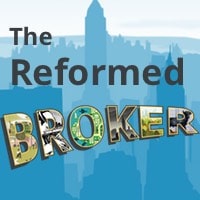
Greetings from Inside ETFs, where over 2,000 financial advisors, asset management professionals, specialist firms, fintech vendors and media people gather each winter to celebrate the industry’s success, lament its challenges and look toward the next big thing.
It’s hard to imagine, however, the next big thing being a new ETF. A recent study said that if a newly launched ETF doesn’t hit $1 billion in assets under management within its first year of trading, it’s statistically very unlikely to ever get there. And if an ETF doesn’t get to $1 billion, it’s not going to get allocated to by the financial advisors that are so important to its success. This sets up a conundrum for issuers – a sort of chicken-or-the-egg scenario wherein launches are fraught with the risk that you’ve built it, but they don’t come.
Thematic ETFs that capture an exposure to a given subsector or industry group still have a shot. Smart Beta products are now dead on arrival, they’re as common as fish in the sea. Index-based ETFs are already a saturated category and most of them are operating for mere single-digit basis points – limiting the profit potential regardless of how large they scale up to. It’s a business where the top three or four issuers (BlackRock’s iShares, Vanguard, State Street’s SPDRs and Invesco’s PowerShares) have almost complete market share, while everyone else tries to think of new ideas that aren’t easily copied so they can compete on the much smaller second tier.
When I first came down to this event in 2015, the industry was still up and coming. The next big thing. There were still financial advisors who hadn’t yet incorporated ETFs into their portfolio models and they were still going to events with the express purpose of learning. Back in 2015, Carl Icahn was making the media rounds with his “Danger Ahead” shtick, pointing toward ETFs as a likely culprit for the next market crash, due to liquidity mismatches or crowding or junk bond issuance or whatever else people were telling him. Since then, financial conditions haven’t changed much and markets have experienced only two or three notable corrections, all of which resolved with v-shaped recoveries on the way to higher highs. The Dow Jones has added another 12,000 points since the “Danger Ahead” period and the ETF space has flourished, without so much as a hiccup along the way.
A lot has changed in just a half-decade. There is very little to be said on the education front these days. Advisors have made ETFs the core of how they build portfolios. Virtually every net new dollar coming into the wealth management complex is being allocated toward ETFs rather than traditional mutual funds, “liquid alts” being one of the lone exceptions.
And so the ETF business finds itself as no longer an up and comer. It is the thing now. The incumbent. As of the end of 2019, total ETF assets have grown to $4.3 trillion – up from just $770 billion ten years ago. 20% of that is in bond or fixed income ETFs. According to Bank of America, ETF assets have grown by about 25% a year and are on pace to hit $5.3 trillion by the end of 2020. But the showstopper from BofA is that they expect this trend to accelerate, with the industry finishing the next decade with around $50 trillion under management!
But I can’t help thinking that maybe it won’t go that way after all. If ETFs were the still the next big thing five years ago, is it likely that they can stay that way? Won’t there be a next next thing at some point that comes along and does to the ETF what ETFs had done to mutual funds? Direct indexing sure looks like a candidate for this. And how does a $4.3 trillion industry handle its incumbency? Do the large players continue to consolidate their hold on the business and vacuum up the rest of what’s left? Will there still be room for independent issuers given the difficulties I’ve outlined?
These are the questions I’ll be asking of people as I hobnob around the Diplomat Hotel this week. We’ll see if anyone has thoughtful answers to them.
Leave a Reply